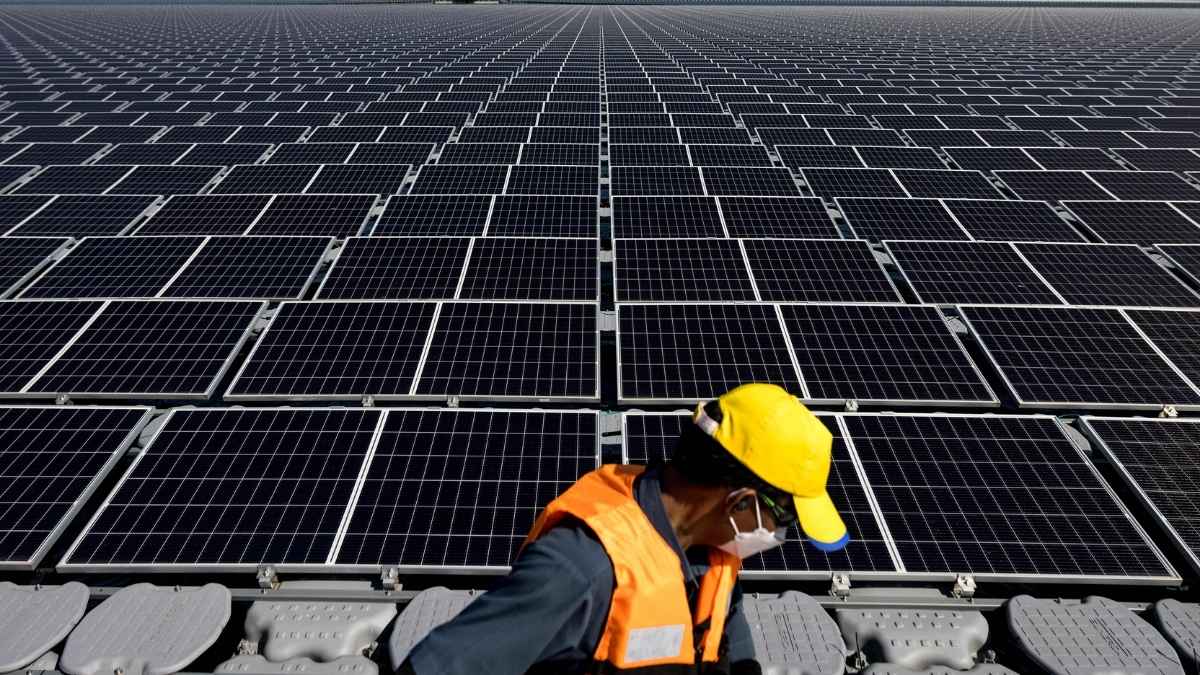Photo: JACK TAYLOR/AFP/Getty Images
SOUTH ASIA’S economies are running hard to keep up with two great demands of the modern age: the need for immense computing power and a transition to clean energy. The region needs a colossal amount of capital to build the datacentres, solar farms and grid upgrades to make this possible. Traditional lenders, such as banks and public markets, are struggling to supply it. Into this gap steps the private-credit fund.
The private-credit industry lends money raised from institutional investors, such as pension funds and insurers, directly to companies or projects. It is a small but fast-growing part of global finance. In Asia, the industry’s assets under management stand at roughly $86.5bn, according to the OECD, a club of rich countries. A sliver of this is in South Asia, but the region’s potential is vast. India-focused private-debt funds already manage some $25-30bn. The financing needed for the region’s infrastructure is many times that.
The scale of the task is daunting. Consider the demand for datacentres. Global technology firms are making huge investments in the region. Google recently committed $15bn to build an artificial-intelligence hub in India. Such facilities require reliable, vast amounts of electricity, as well as robust digital and physical infrastructure. Meanwhile, the need for renewable-energy projects and grid modernisation is acute. Analysts at BloombergNEF, a research firm, track a global surge in energy-transition investment, a wave South Asia must ride.
These projects share characteristics that make them awkward fits for conventional lenders. Their construction is often staged, with capital needed in chunks over many years. Their payback periods are long. Their structures are bespoke, involving complex contracts to sell power or lease computing capacity. Banks, which prefer standardised loans that can be sold on, and public markets, which crave liquidity, balk.
Private-credit funds are more accommodating. They thrive on complexity, crafting loans with tailored repayment schedules and conditions. They can provide “patient capital”, matching the long-term liabilities of their investors, such as insurers, with the long-term assets they finance. They can move quickly, offering certainty to developers. And the returns they seek are secured against predictable cashflows, such as those from a power-purchase agreement or a datacentre lease, offering investors yields that are not tied to the vagaries of stockmarkets.
The industry’s growth in South Asia will probably be concentrated in a few areas. Datacentres are one. Another is renewable energy and storage, where many small- and medium-sized projects need financing too fiddly for big banks. Upgrades to electricity grids and microgrids, which have localised revenue streams, are a third. In each, private credit can provide the structured financing that bridges the gap between a project’s inception and its maturity.
Money is available. Institutional investors are hunting for yield and assets that can match their long-term payouts. Asian capital, which once flowed to private-credit funds in America and Europe, is now staying closer to home. Development-finance institutions and sovereign-wealth funds can provide “blended finance”, taking the first, riskiest slice of a project’s debt to attract private lenders.
Still, the risks are real. Currency swings can devastate a project’s finances. Governments can be unreliable partners, altering regulations or delaying permits. Delays and cost overruns are common in big infrastructure projects. And the loans themselves are illiquid, meaning investors may struggle to sell them. These dangers can be mitigated, but not eliminated, with currency hedges, political-risk insurance and careful structuring.
For private credit to flourish in South Asia, policymakers and investors should take a few practical steps. Fund managers need local teams to identify and monitor projects. Governments and development banks should use blended finance to draw in private capital. Standardised contracts for common projects, such as solar farms, would cut costs. And regulators should encourage local pension funds and insurers to invest, helping to match domestic savings with domestic infrastructure needs.
South Asia’s transformation requires a financing revolution. The region must build not for today, but for a more digital, cleaner future. Its governments cannot pay the bill alone. Its banks cannot carry the load. Into the breach step a new set of financiers, with new tools. They may just build the bridge the region needs. ■

